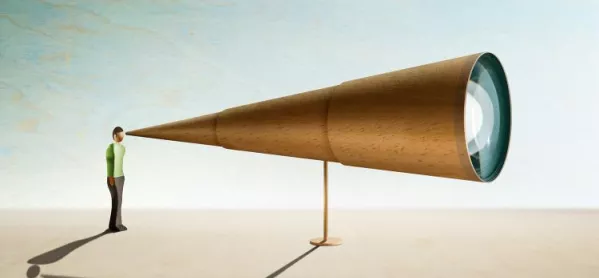- Home
- How ‘real science’ inspires pupils into Stem careers
How ‘real science’ inspires pupils into Stem careers

We should welcome the recent news from the government that international students can stay in the UK for up to two years after graduating, something that is essential if we are to start tackling the growing shortage of skilled workers in science, technology, engineering and maths (Stem) careers in the UK.
However, in itself, this will not be enough. If we are serious about ensuring that the UK remains at the forefront of global scientific endeavour, we have to start looking closer to home.
We desperately need to get more UK students opting for Stem subjects at university. We need to galvanise the next generation of scientists currently sitting in classrooms around the country, inspiring them with a passion for science, maths and technology in a way that traditional education seems to be struggling to do.
Fortunately, there is a growing effort in UK schools to do just that. Organisations like the Institute for Research in Schools (Iris) are leading a revolution in how we, as educators, should be approaching Stem education.
A revolution in Stem education
I am lucky enough to work at a pioneering academy in Cornwall, where we have put nurturing these future researchers and scientists right at the top of the agenda. Our students, from the minute they arrive, are engaged in real scientific research. Yes, they have to learn the curriculum, so they still have science and maths lessons. But we have children as young as 11 working with academics from around the country on true scientific investigations.
For example, through our partnership with Iris, we have set our Year 9 students the task of decoding and annotating the genome of the human whipworm, a parasitic roundworm, in association with the Wellcome Sanger Institute.
We also have Year 12s who are working with the UK Astronomy Technology Centre, analysing spectra from previous space missions to identify candidate targets for the James Webb Space Telescope. A student last year used a university-grade particle detector to investigate the link between the energy of cosmic muons at the Earth’s surface and atmospheric conditions.
These are not experiments you will find in your typical secondary-school science lesson - our students are doing real science. These young people will be heading to university with a wealth of experience and a deep appreciation for the role of Stem in the world today.
A truly global endeavour
The thing is, these opportunities are easy to come by. Organisations like Iris have made it really easy for schools and teachers to access genuine research projects.
Iris exists to help schools bridge the gap between what happens in university research departments and what our children are learning in the classroom. And it’s not just the students who reap the rewards. Teachers also benefit from what is essentially the best professional development available. The enthusiasm of the students is infectious, and the chance to be involved in real science is enough to ignite a renewed passion for your subject.
Scientific research is a truly global endeavour, with academics from universities around the world collaborating on a daily basis, whether on massive projects like CERN and the Human Genome Project or on a smaller scale with teams cooperating on research across borders. My focus is on ensuring that our students learn how to navigate this global, collaborative field, and are confident in their ability to work within an international context.
As a result, we have won awards at international conferences. Two students won bronze awards at the Asia-Pacific Conference for Young Scientists, for a project mapping glacial melt across Greenland using data from synthetic-aperture radar satellites. And, next week, they will present again at the European Space Agency Symposium at the University of Leicester.
Another project, researching weever fish distribution on Cornish beaches based on data from the RNLI, saw us win the award for most innovative research at the Korea Science Academy Science Fair.
Authentic research
The evidence is striking: when sixth-form students take part in real, authentic science, greater numbers go on to study science at university and go on to take up careers in science and engineering. It is easy to see why, when you are working with the students on their investigations. They are, without exception, more engaged, more motivated and more inspired by their own research than by any practical task in the syllabus.
More and more schools are realising the value in encouraging their students to carry out authentic research. This trend must continue. School leaders, classroom teachers and the Department for Education need to find ways of giving every child the opportunity to get involved in real science. Just think what that will do to the UK’s position in the global Stem landscape.
Dan Chapman is assistant principal at Camborne Science and International Academy, in Cornwall
Keep reading for just £1 per month
You've reached your limit of free articles this month. Subscribe for £1 per month for three months and get:
- Unlimited access to all Tes magazine content
- Exclusive subscriber-only stories
- Award-winning email newsletters